Louis, Grand Condé
| Louis II | |||||
|---|---|---|---|---|---|
| Le Grand Condé | |||||
|
Portrait by Justus van Egmont | |||||
| Prince of Condé | |||||
| Tenure | 26 December 1646 – 11 December 1686 | ||||
| Predecessor | Henri II, Prince of Condé | ||||
| Successor | Henri Jules, Prince of Condé | ||||
| Born |
8 September 1621 Paris, France | ||||
| Died |
11 December 1686 (aged 65) Palace of Fontainebleau, Seine-et-Marne, France | ||||
| Burial | Église at Valléry, France | ||||
| Spouse | Claire-Clémence de Maillé-Brézé | ||||
| Issue Detail |
Henri Jules, Prince of Condé Louis, Duke of Bourbon | ||||
| |||||
| House | Bourbon-Condé | ||||
| Father | Henri II, Prince of Condé | ||||
| Mother | Charlotte Marguerite de Montmorency | ||||
| Religion | Roman Catholicism | ||||
| Signature |
| ||||
Louis de Bourbon or Louis II, Prince of Condé (8 September 1621 – 11 December 1686) was a French general and the most famous representative of the Condé branch of the House of Bourbon. Prior to his father's death in 1646, he was styled the Duc d'Enghien. For his military prowess he was renowned as le Grand Condé.
Biography
Louis was born in Paris, the son of Henri II de Bourbon, Prince of Condé and Charlotte Marguerite de Montmorency.[1] His father was a first cousin-once-removed of Henry IV, the King of France, and his mother was an heiress of one of France's leading ducal families.
Condé's father saw to it that his son received a thorough education – Louis studied history, law, and mathematics during six years at the Jesuits' school at Bourges. After that he entered the Royal Academy at Paris. At seventeen, in the absence of his father, he governed Burgundy.

His father betrothed him to Claire-Clémence de Maillé-Brézé, niece of Cardinal Richelieu, before he joined the army in 1640. Despite being in love with Mlle du Vigean, daughter of the king's bedchamber François Poussard, he was compelled by his father to marry his fiancée who was thirteen.[2] Although she bore her husband three children, Enghien later claimed she committed adultery with different men in order to justify locking her away at Châteauroux, but the charge was widely disbelieved: Saint-Simon, while admitting that she was homely and dull, praised her virtue, piety and gentleness in the face of relentless abuse.[3]
Enghien took part with distinction in the siege of Arras. He also won Richelieu's favor when he was present with the Cardinal during the plot of Cinq Mars, and afterwards fought in the Siege of Perpignan (1642).
Thirty Years' War

In 1643 Enghien was appointed to command against the Spanish in northern France. He was opposed by Francisco de Melo, and the tercios of the Spanish army were held to be the toughest soldiers in Europe. At the Battle of Rocroi (19 May) Enghien himself conceived and directed the decisive victory.[4]
After a campaign of uninterrupted success, Enghien returned to Paris in triumph, and tried to forget his enforced and hateful marriage with a series of affairs (after Richelieu's death in 1642 he would unsuccessfully seek annulment of his marriage in hopes of marrying Mlle du Vigean, until she joined the order of the Carmelites in 1647).[3] In 1644 he was sent with reinforcements into Germany to the assistance of Turenne, who was hard pressed, and took command of the whole army.[4]
The Battle of Freiburg (August) was desperately contested, but in the end the French army won a great victory over the Bavarians and Imperialists, commanded by Franz Baron von Mercy. As after Rocroi, numerous fortresses opened their gates to the duke.
Enghien spent the next winter, as every winter during the war, amid the gaieties of Paris. The summer campaign of 1645 opened with the defeat of Turenne by Mercy at Mergentheim, but this was retrieved in the victory of Nördlingen, in which Mercy was killed, and Enghien himself received several serious wounds. The capture of Philippsburg was the most important of his other achievements during this campaign. In 1646 Enghien served under Gaston, Duke of Orléans in Flanders, and when, after the capture of Mardyck, Orléans returned to Paris, Enghien, left in command, captured Dunkirk (11 October).
Fronde

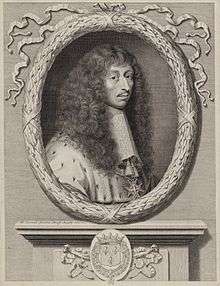
It was in this year that Enghien's father died, leaving him the fourth of his line and second of his name to bear the title Prince of Condé. He also now became premier prince du sang, addressed by everyone, from the king down, simply as Monsieur le prince. The enormous power that fell into his hands was naturally looked upon with serious alarm by the Regent and her minister. Condé's birth and military renown placed him at the head of the French nobility, but, added to that, the family of which he was now chief was both enormously rich and master of a large part of France. Condé himself held Burgundy, Berry and the marches of Lorraine, as well as other less important territory. His brother, the Prince de Conti held Champagne, and his brother-in-law, Longueville, Normandy.
The government, therefore, was determined to allow no increase of his already overgrown authority, and Mazarin made an attempt, which for the moment proved successful, both to find him employment and to tarnish his fame as a general. He was sent to lead the revolted Catalans. Ill supported, he was unable to achieve anything, and, being forced to raise the siege of Lleida, he returned home in bitter indignation. In 1648, however, he received the command in the important field of the Low Countries, and at Lens (19 August) a battle took place, which, beginning with a panic in his own regiment, was retrieved by Condé's coolness and bravery, and ended in a victory that fully restored his prestige.[4]
In September of the same year, 1648, Condé was recalled to court, for the Regent Anne of Austria required his support. Influenced by the fact of his royal birth and by his scorn for the bourgeoisie, Condé lent himself to the court party, and finally, after much hesitation, he consented to lead the army which was to reduce Paris.
On his side, although his forces were insufficient, the war was carried on with vigour. After several minor combats with substantial losses, and a threatening scarcity of food, the Parisians were weary of the war. The political situation inclined both parties to peace, which was made at Rueil on 20 March.
It was not long, however, before Condé became estranged from the court. His pride and ambition earned him universal distrust and dislike, and the personal resentment of Anne. She assented to the sudden arrest of Condé, Conti and Longueville on 18 January 1650. But others, including Turenne and his brother the Duke of Bouillon, made their escape.
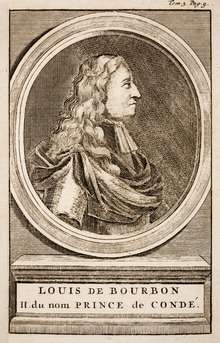
Vigorous attempts for the release of the princes began to be made. The women of the family were now its heroes. The dowager princess demanded from the parlement of Paris fulfilment of the reformed law of arrest, which forbade imprisonment without trial. Condé's sister Anne Genevieve, duchesse de Longueville entered into negotiations with Spain; and the young Princess of Condé, having gathered an army around her, entered Bordeaux and gained the support of the parlement of that town. She, alone among the nobles who took part in the folly of the Fronde, earned respect and sympathy. Faithful to a faithless husband, she came forth from the retirement to which he had condemned her to fight for his freedom.
The delivery of the princes was brought about in the end by the coming together of the old Fronde (the party of the parlement and of Cardinal de Retz) and the new Fronde (the party of the Condés). Anne was at last, in February 1651, forced to liberate the princes from their prison at Le Havre. Soon afterwards, however, another shifting of parties left Condé and the new Fronde isolated. With the court and the old Fronde in alliance against him, Condé found no recourse but that of making common cause with the Spaniards who were at war with France.
The confused civil war which followed this step (September 1651) was memorable chiefly for the battle of the Faubourg St Antoine, in which Condé and Turenne, two of the leading generals of the age, measured their strength (2 July 1652). The army of the Prince was only saved by being admitted within the gates of Paris.
La Grande Mademoiselle, daughter of Gaston, Duke of Orléans, persuaded the Parisians to act thus, and turned the cannon of the Bastille on Turenne's army. Thus Condé, who as usual had fought with the most desperate bravery, was saved, and Paris underwent a new siege. This ended in the flight of Condé to the Spanish army (September 1652), and thenceforward, up to the peace, he was in open arms against France, and held high command in the army of Spain. Nonetheless, even as an exile, he asserted the precedence of the royal house of France over the princes of Spain and Austria, with whom he was allied for the moment.
Condé's fully developed genius as a commander found little scope in the cumbrous and antiquated system of war practised by the Spanish, and though he gained a few successes, and manoeuvred with the highest possible skill against Turenne, his disastrous defeat at the Dunes near Dunkirk (14 June 1658) led Spain to open negotiations for peace. The Treaty of the Pyrenees in 1659, which ended the Franco-Spanish War, pardoned Condé and allowed him to return to France.
Rehabilitation
.png)
Condé now realized that the period of agitation and party warfare was at an end. He accepted, and loyally maintained henceforward, the position of a chief subordinate to King Louis XIV. Even so, some years passed before he was recalled to active employment, and these years he spent on his estate, the Château de Chantilly. The Château had been inherited by Condé through his mother Charlotte Marguerite, when her brother, Henri II de Montmorency, passed away.[5] Here, he gathered round him a brilliant company, which included many men of genius such as Molière, Racine, Boileau, La Fontaine, Nicole, Bourdaloue, and Bossuet.
About this time, negotiations between the Poles were carried on with a view to the royal elections in Poland, at first by Condé's son, Henri Jules de Bourbon, and afterwards by Condé himself. These, after a long series of curious intrigues, were finally closed later in 1674 by the veto of King Louis XIV and the election of John Sobieski. The Prince's retirement, which was only broken by the Polish question and by his personal intercession on behalf of Fouquet in 1664, ended in 1668.
Subsequently, Condé proposed to the Marquis de Louvois, the Minister of War, a plan for seizing Franche-Comté, the execution of which was entrusted to him and successfully carried out. He was now completely re-established in the favour of King Louis XIV, and with Turenne, was the principal French commander in the celebrated campaign of 1672 against the Dutch. At the forcing of the Rhine passage at Tolhuis (June 12), he received a severe wound, after which he commanded in Alsace against the Imperials.
In 1673, he was again engaged in the Low Countries, and in 1674, he fought his last great battle, the Battle of Seneffe, against William of Orange[lower-alpha 1].[6] This battle, fought on August 11, was one of the hardest of the century, and Condé, who displayed the reckless bravery of his youth, had three horses killed under him. His last campaign was that of 1675 on the Rhine, where the army had been deprived of its general by the death of Turenne; and where by his careful and methodical strategy, he repelled the invasion of the Imperial army of Raimondo Montecuccoli.
After this campaign, prematurely worn out by the toils and excesses of his life, and tortured by gout, Condé returned to Château de Chantilly, where he spent the eleven years that remained to him in quiet retirement. At the end of his life, Condé specially sought the companionship of Bourdaloue, Pierre Nicole, and Bossuet, and devoted himself to religious exercises. He died at the Palace of Fontainebleau on 11 November 1686, at the age of sixty-five. Bourdaloue attended him at his death-bed, and Bossuet pronounced his elegy.
The Prince's lifelong resentment of his forced marriage to a social inferior persisted,[7] and found unchivalrous expression in a bitter letter, his last to the King, in which he begged that his wife never be released from her exile to the countryside. Nonetheless, Claire-Clémence de Maillé had brought the Prince of Condé a dowry of 600,000 livres, the manors of Ansac, Mouy, Cambronne, Plessis-Billebault, Galissonnière, and Brézé, and on one occasion, liberation from the King's dungeon.
In 1685, his only surviving grandson, Louis de Bourbon, married Louise Françoise, Mademoiselle de Nantes - eldest surviving daughter of King Louis XIV and Madame de Montespan. In mid-1686, Louise Françoise (later better known as Madame la Duchesse) caught smallpox while at Fontainebleau; it was the Prince himself who helped nurse the little Duchess back to health, to the point of staying up with her to help her eat. The Prince even forcibly stopped the King himself from seeing his daughter for his own safety. Despite Louise Françoise surviving and giving her husband ten children, the Prince himself became ill; most said it was from worry about her health. Shortly, he also died at the Palace of Fontainebleau, and was buried in the Église at Vallery, the traditional burial place of the Princes of Condé; Claire-Clémence, who outlived her husband, was buried at the Église Saint-Martin at the Château de Châteauroux, France in 1694.
The Grand Condé's son and grandson left little in history except that they were afflicted by the madness which they had inherited from his wife Claire-Clémence.
Ancestry
| Ancestors of Louis, Grand Condé | ||||||||||||||||||||||||||||||||||||||||||||||||||||||||||||||||||||||||||||||||||||||||||||||||||||||||||||||||||||||||||||||||||||||||||||||||||||||||||||||||||||||||||||||||||||||||||||||||||||||||||||||||||||||||||||||||||||||||||||||||||||||||||||||||||||||||||||||||||||||||||||||||||||||||||||||||||||||||||||||||||||||||||||||||||||||||||||||||||||||||||||||||||||||||||||||||||||||||||||||||||||||||||||||||||||||||||||||||||||||||||||||||||||||||||||||||||||||||||||||||||||||||||||||||||||||||||||||||||||||||||||||||||||||||||||||||||||||||||||||||||||||||||||||||||||||||||||||||
|---|---|---|---|---|---|---|---|---|---|---|---|---|---|---|---|---|---|---|---|---|---|---|---|---|---|---|---|---|---|---|---|---|---|---|---|---|---|---|---|---|---|---|---|---|---|---|---|---|---|---|---|---|---|---|---|---|---|---|---|---|---|---|---|---|---|---|---|---|---|---|---|---|---|---|---|---|---|---|---|---|---|---|---|---|---|---|---|---|---|---|---|---|---|---|---|---|---|---|---|---|---|---|---|---|---|---|---|---|---|---|---|---|---|---|---|---|---|---|---|---|---|---|---|---|---|---|---|---|---|---|---|---|---|---|---|---|---|---|---|---|---|---|---|---|---|---|---|---|---|---|---|---|---|---|---|---|---|---|---|---|---|---|---|---|---|---|---|---|---|---|---|---|---|---|---|---|---|---|---|---|---|---|---|---|---|---|---|---|---|---|---|---|---|---|---|---|---|---|---|---|---|---|---|---|---|---|---|---|---|---|---|---|---|---|---|---|---|---|---|---|---|---|---|---|---|---|---|---|---|---|---|---|---|---|---|---|---|---|---|---|---|---|---|---|---|---|---|---|---|---|---|---|---|---|---|---|---|---|---|---|---|---|---|---|---|---|---|---|---|---|---|---|---|---|---|---|---|---|---|---|---|---|---|---|---|---|---|---|---|---|---|---|---|---|---|---|---|---|---|---|---|---|---|---|---|---|---|---|---|---|---|---|---|---|---|---|---|---|---|---|---|---|---|---|---|---|---|---|---|---|---|---|---|---|---|---|---|---|---|---|---|---|---|---|---|---|---|---|---|---|---|---|---|---|---|---|---|---|---|---|---|---|---|---|---|---|---|---|---|---|---|---|---|---|---|---|---|---|---|---|---|---|---|---|---|---|---|---|---|---|---|---|---|---|---|---|---|---|---|---|---|---|---|---|---|---|---|---|---|---|---|---|---|---|---|---|---|---|---|---|---|---|---|---|---|---|---|---|---|---|---|---|---|---|---|---|---|---|---|---|---|---|---|---|---|---|---|---|---|---|---|---|---|---|---|---|---|---|---|---|---|---|---|---|---|---|---|---|---|---|---|---|---|---|---|---|---|---|---|---|---|---|---|---|---|---|---|---|---|---|---|---|---|---|---|---|---|---|---|---|---|---|---|---|---|---|---|---|---|---|---|---|---|---|---|---|---|---|---|---|---|---|---|---|---|---|---|---|---|---|---|---|---|---|---|---|---|---|---|---|---|---|---|---|---|---|---|---|---|---|---|---|---|---|---|---|---|---|---|---|---|---|---|---|---|---|---|---|---|---|---|---|---|---|---|---|---|---|---|---|---|---|---|---|---|---|---|---|---|---|---|---|
| ||||||||||||||||||||||||||||||||||||||||||||||||||||||||||||||||||||||||||||||||||||||||||||||||||||||||||||||||||||||||||||||||||||||||||||||||||||||||||||||||||||||||||||||||||||||||||||||||||||||||||||||||||||||||||||||||||||||||||||||||||||||||||||||||||||||||||||||||||||||||||||||||||||||||||||||||||||||||||||||||||||||||||||||||||||||||||||||||||||||||||||||||||||||||||||||||||||||||||||||||||||||||||||||||||||||||||||||||||||||||||||||||||||||||||||||||||||||||||||||||||||||||||||||||||||||||||||||||||||||||||||||||||||||||||||||||||||||||||||||||||||||||||||||||||||||||||||||||
Issue
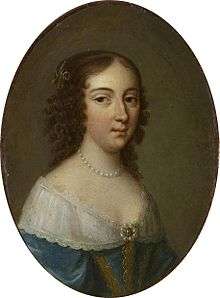
Louis married Claire-Clémence de Maillé-Brézé, daughter of Urbain de Maillé-Brézé, Marquis of Brézé and Nicole du Plessis de Richelieu, at the Palais Royal in Paris, in February 1641, in the presence of King Louis XIII of France, Anne of Austria, and Gaston d'Orléans. Their children were:
- Henri Jules de Bourbon, Duke of Enghien (29 July 1643, Paris – 1 April 1709, Paris), who later succeeded as Prince of Condé, married Princess Anne Henriette of the Palatinate and had issue.
- Louis de Bourbon, Duke of Bourbon (20 September 1652, Bordeaux – 11 April 1653, Bordeaux), died in infancy.
- X de Bourbon, Mademoiselle de Bourbon (1657, Breda – 28 September 1660, Paris), also died in infancy.
Titles and styles

- 8 September 1621 – 26 December 1646 His Serene Highness the Duke of Enghien

- 26 December 1646 – 11 November 1686 His Serene Highness the Prince of Condé
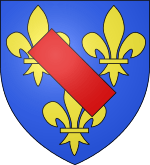
Legacy
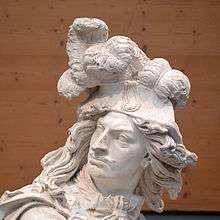
The failures of his generalship was in the Fronde, when he supported the losing parlamentarian side, and during the spanish-franco war, when he lost at both Dunes and Arras.
That he was capable of waging a methodical war of positions may be assumed from his campaigns against Turenne and Montecucculi, the greatest generals opposing him. But it was in his eagerness for battle, his quick decision in action, and the stern will which sent his regiments to face the heaviest losses, that Condé earned the right to be compared to the great generals of his time. Upon the Grand Condé’s death, Louis XIV pronounced that he had lost "the greatest man in my kingdom."
In 1643 his success at the Battle of Rocroi, in which he led the French army to an unexpected and decisive victory over the Spanish, established him as a great general and popular hero in France. Together with the Marshal de Turenne he led the French to victory in the Thirty Years' War.
During the Fronde, he was courted by both sides, initially supporting Mazarin; he later became a leader of the princely opposition. After the defeat of the Fronde he entered Spanish service and led their armies against France. He returned to France only after the Treaty of the Pyrenees in 1659, but soon received military commands again.
Condé conquered the Franche-Comté during the War of Devolution and led the French armies in the Franco-Dutch War together with Turenne. His last campaign was in 1675, taking command after Turenne had been killed, repelling an invasion of an imperial army.
He is regarded as one of the premier generals in world history, whose masterpiece, the Battle of Rocroi, is still studied by students of military strategy.
His descendants include the present-day pretenders to the throne of France and Italy and the kings of Spain and Belgium.
He was portrayed in the film Vatel by Julian Glover.
Notes
- ↑ afterwards King William III of England
References
- ↑ Wolf 1968, p. 4.
- ↑ Ouvrard, Jean-Marie. "Poussard". Les Blasons de la Charente (in French). Retrieved 2008-04-13.
- 1 2 Spanheim, Ézéchiel (1973). ed. Emile Bourgeois, ed. Relation de la Cour de France. le Temps retrouvé (in French). Paris: Mercure de France. p. 319.
- 1 2 3 Keegan & Wheatcroft 1996, p. 61.
- ↑ see the Château de Chantilly article for full documentation
- ↑ Wolf 1968, p. 241.
- ↑ Spanheim, Ézéchiel (1973). ed. Emile Bourgeois, ed. Relation de la Cour de France. le Temps retrouvé (in French). Paris: Mercure de France. pp. 93–94.
Sources
| Wikimedia Commons has media related to Louis, Grand Condé. |
- Keegan, John; Wheatcroft, Andrew, eds. (1996). Who's Who in Military History: From 1453 to the Present Day. Routledge.
- Wolf, John B. (1968). Louis XIV. W.W. Norton & Company, Inc.

- Katia Béguin, Les Princes de Condé (Seyssel: Champ Vallon, 1999)
Louis, Grand Condé Cadet branch of the House of Bourbon Born: 8 September 1621 Died: 11 November 1686 | ||
| French nobility | ||
|---|---|---|
| Preceded by Henri de Bourbon |
Prince of Condé 26 December 1646 – 11 November 1686 |
Succeeded by Henri Jules de Bourbon |